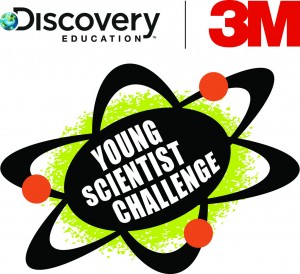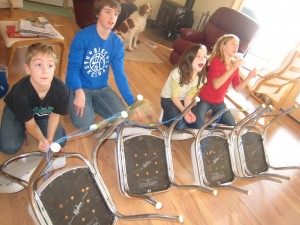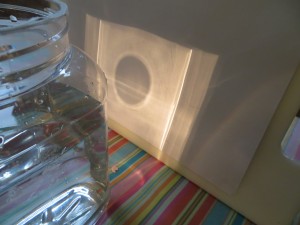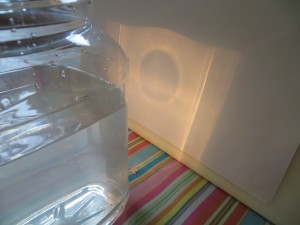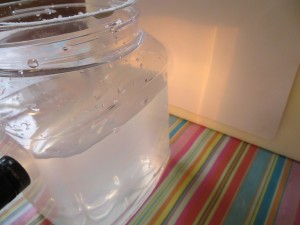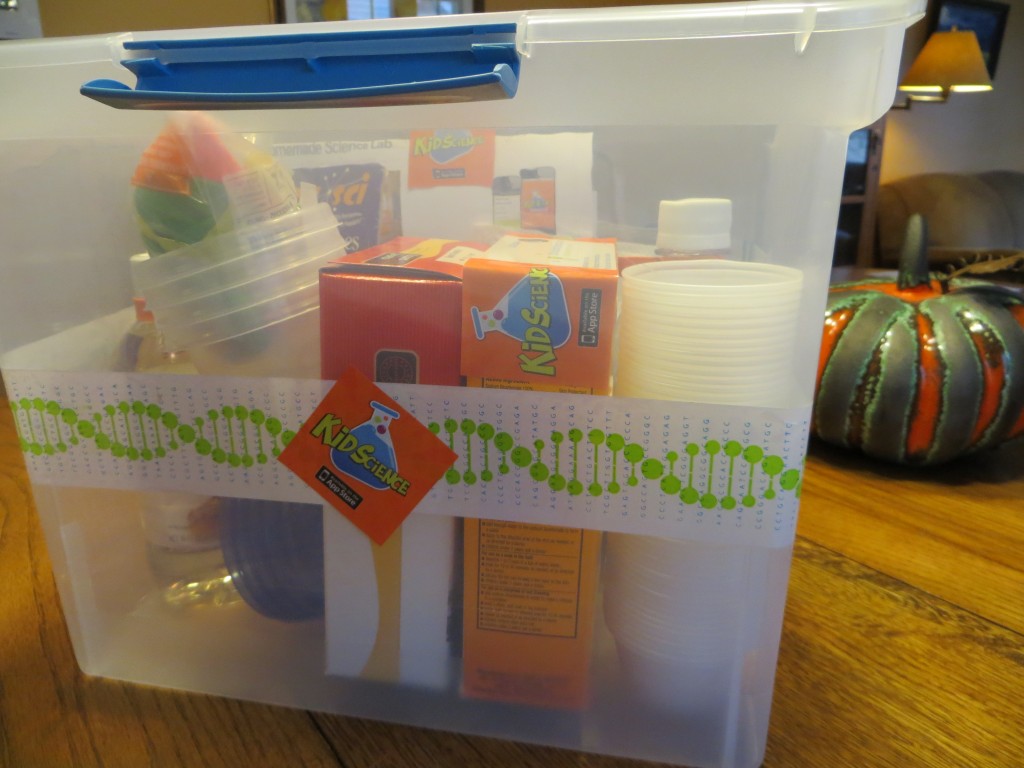Category:Uncategorized’
My New Book
- by KitchenPantryScientist
It’s been a busy summer, but we’re working on some sweet new experiments to share with you soon!
Last week, the kids and I got an advance copy of my new book “Kitchen Science Lab for Kids,” which will be available September 15th and we love how it turned out!
If you pre-order a copy from Amazon, Barnes&Noble, IndieBound, or Indigo before August 15th, I’ll send you a personalized, signed bookplate for each copy you order. Just email your receipt number and the address where you’d like the bookplate(s) sent. My email address is kitchenpantryscientist@earthlink.net. (Be sure to include the name(s) you’d like the book signed for!)
![IMG_4598[1]](https://kitchenpantryscientist.com/wp-content/uploads/2014/08/IMG_45981-300x300.jpg)
At-home science provides an environment for freedom, creativity and invention that’s not always possible in a school setting. In your own kitchen, it’s simple, inexpensive, and fun to whip up a number of amazing science experiments using everyday ingredients. Science can be as easy as baking. Hands-On Family: Kitchen Science Lab for Kids offers 52 fun science activities for families to do together. The experiments can be used as individual projects, for parties, or as educational activities groups. Kitchen Science Lab for Kids will tempt families to cook up some physics, chemistry and biology in their own kitchens and back yards. Many of the experiments are safe enough for toddlers and exciting enough for older kids, so families can discover the joy of science together.
Young Scientist Challenge
- by KitchenPantryScientist
Can kids in middle school come up with world-changing inventions? Absolutely.
Most 5-8th graders don’t have free access to labs full of chemicals and equipment, which is probably a good thing, but they’re armed with more curiosity and creativity than most adults. When given the opportunity and encouragement to let their imaginations run wild, kids come up with the most amazing ideas.
The Discovery Education 3M Young Scientist Challenge helps address the gap between idea and reality, and offers kids amazing incentives to come up with big ideas. The competition encourages kids in middle school to make two-minute videos about their ideas for using science, technology, math and engineering (STEM) to solve real-life problems. The videos are judged based on
- Creativity (ingenuity and innovative thinking) (30%);
- Scientific knowledge (30%);
- Persuasiveness and effective communication (20%); and
- Overall presentation (20%).
3M‘s Innovation Page gives overviews of how their scientists are impacting our daily lives, and some of their scientists will mentor the contest’s ten finalists, helping them envision how to take their creations from dream to reality. Ten finalists will travel to the 3M Innovation Center for the final competition.
Want to enter? Here’s the link: http://www.youngscientistchallenge.com/enter.
It seemed like the best way to learn about how kids come up with ideas was to ask my own two middle schoolers if they’d like to enter the contest, so I asked them to think about problems that they could help solve with STEM. They were less than excited until I showed them a few of the videos from the Young Scientist Challenge website. Like me, they were blown away by what Peyton Robertson and Deepika Kurup created to win the 2012 and 2013 Young Scientist Challenge and decided, without any prodding from me, that they wanted to come up with their own ideas.
My son, who is a voracious reader of all things science, and is somewhat obsessed with meteorology, immediately knew what particular area he wanted to focus on. It took a few days, but now he’s got a great idea and is working to make a model to test.
My oldest daughter was another story. She likes science, but spends much more time thinking about acting, basketball, photography, her friends, and our German Wirehaired Pointer. She quickly got frustrated and worried that she didn’t know enough about science to come up with a good idea. To encourage her, I asked her to think about how she could solve a health problem in animals, prevent basketball injuries, make a camera app, or solve an environmental problem. She decided to try to think of something people throw away and use it for something really great. While researching ocean trash, she came up with another idea, addressing a water pollution problem and is excited to test out her idea.
They need to get going, since the entry deadline is April 22nd, but I know they can do it, and love the ideas they’ve come up with!
If you’re on Twitter, you can follow the contest @DE3MYSC and join us for #STEMchat on Twitter April 8 from 9 – 10 PM Eastern as we talk about How to Raise America’s Top Young Scientist (this is the title earned by the winner of the DE 3M YSChallenge.)
Although I don’t usually write sponsored posts, I made an exception for this contest, since I think it’s a fantastic way to get kids excited about STEM. This post is sponsored by the Discovery Education 3M Young Scientist Challenge.
#SpaceMicrobes
- by KitchenPantryScientist
A soil bacterium we swabbed last spring on the set of Twin Cities’ Kare11 News is headed to the International Space Station! Even though we collected it here in Minnesota, Streptomyces kanamyceticus (we’ll call it S.kan for short) was first isolated from dirt in Japan.
It’s a very cool bacterium. Not only does it grow in really interesting colonies like the ones you see in the photo below, but it produces an antibiotic called Kanamycin that’s widely use in research, industry and medicine. Our #MinnesotaMicrobe takes off on March 16th from Kennedy Space Center on a SpaceX-3 rocket! Follow the mission on Project MERCURRI’s website, here on my blog, or using the #spacemicrobes hashtag on Twitter.

After we sent our sample off in the mail, it was swabbed onto bacterial growth medium and these cool little colonies were grown by the scientists from Project MERCURRI, alongside other samples swabbed from NFL and NBA stadiums, NASA spacecraft, and even from a candy jar at Kare11’s sister NBC studio at the Today Show. Around 40 of the samples were chosen to travel to the International Space Station (ISS) for a “Superbowl” of microbes. Scientists want to study how the bacteria grow and change in space and want to get the public excited about the project.
Why should we care how bacteria grow on the ISS, or on any spacecraft?
Microbes behave oddly out in space, and when humans exit Earth’s atmosphere, we carry microscopic inhabitants along with us. Tiny terrestrials (mostly bacteria) outnumber our bodies’ own cells by about ten to one, and microbes too small to see with the naked eye cover everything you around you, assuming you don’t live in a sterile bubble.
Pseudomonas aeruginosa, a funny little bacterium that smells like grapes and loves water, grows differently in microgravity. These bacteria form slime layers called biofilms and can cause problems for extraterrestrial toilets and water systems, like the ones on the International Space Station (ISS). Here on Earth, P. aeruginosa can make people who have been badly burned and people with cystic fibrosis (CF) really sick.
NASA also discovered that spending time on the International Space Station made Salmonella bacteria, which cause food poisoning, more virulent. In other words, they can make you sicker.
By studying what happens to terrestrial bacteria in space, scientists can discover new ways to fight infectious disease on Earth and hope to prevent mechanical and medical disasters on future space missions. Microbes may even offer ways to clean up waste in space or generate new medications mid-mission. After all, it will take a long time to get to Mars, and it may be a one-way trip for the first humans to travel there!
If you want to make your own microbial growth plates at home to see what’s growing around your house, you can find directions and a video on how to do it here. In the next week or so, I’ll post instructions for a cool new microbiology experiment that I’ve been thinking about.
Cabin Fever Science
- by KitchenPantryScientist
School closed because it’s 20 below?
Here are five fun experiments to do while you’re stuck inside today. No trip to the store required. Just click on the experiment name for directions!
Lifting an Ice Cube with a String
Download KidScience app (it’s free) on your iPhone, iPod or iPad for more easy experiments, like cornstarch goo and zooming fish.
Red Sunset Science Experiment
- by KitchenPantryScientist
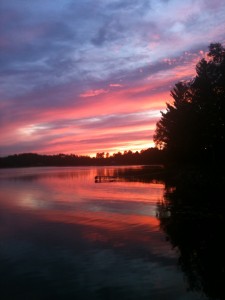
When Krakatoa erupted in 1883, the explosion and resulting tsunamis killed around 40,000 people, forever changed the geography of the East Indies, spewed tons of sulfur dioxide and ash into the atmosphere, and resulted in some of the most spectacular sunsets in recorded history. Artists and writers around the world tried to capture the blazing sky on paper, and some speculate that the psychedelic sky in Edvard Munch’s “The Scream” was inspired by a Krakatoa sunset.
Why are sunsets red? And how would volcanic ash make them even redder?
The colors we see depend on the light waves that are reflected and absorbed by the things around us. For example, grass looks green since it absorbs most of the visible light waves except green, reflecting that color back at our eyes. Things that look black absorb all the colored light waves. Blue light has a short wavelength, and easily bounces off surrounding particles (called scattering), while red light has a longer wavelength and is more difficult to scatter.
The oxygen and nitrogen that make up most of our atmosphere are good at filtering out blue and violet light, but your eyes are good at seeing blue light and sunlight doesn’t have to travel though much atmosphere when it’s directly overhead, so the sky looks blue on a sunny day.
As the sun sets, its light has to travel a longer distance across the atmosphere to reach your eyes. By the time we see it, many of the blue light particles have been filtered out, allowing you to see the red, yellow and orange light waves that remain. In addition, the lower atmosphere contains more large particles like dust and pollen, which scientists call aerosols. These particles scatter the blue light even more, allowing you to enjoy the red, yellow and orange light waves that remain to create a beautiful sunset.
The ash from Krakatoa was a very effective blue light filter, making the skies so red that fire engines were called out in New York.
To see how particles scatter light, fill a plastic container with water and shine a flashlight through it on to a white piece of paper. The light should look white.
Now add a few drops of milk to the water and shine your light through again. Does the color change? What if you add more milk or use a longer container, so the light has to travel farther?
What happened? Imagine that your flashlight is the sun and the milky water is the lower atmosphere. The molecules in milk are filtering out the blue light in your flashlight beam, allowing you to create your own red “sunset.”
Physics Fountain
- by KitchenPantryScientist
We played around with dish soap this weekend to watch the Kaye effect, which I learned about from my physicist friend Dr. SkySkull.
It’s an experiment in liquid dynamics, and I’ll post a protocol (recipe) for how to do it in the next day or two.
Science Kit for Kids
- by KitchenPantryScientist
I just put together a homemade science kit (for a silent auction at a fundraiser) and it was so cute I had to post a picture.
Click here to see a post with links to homemade science kit experiments. Love giving these as birthday and holiday gifts too! To take it up a notch, pair your science kit with KidScience app for iPhones/iPods!
Over the next few weeks, I’ll be posting some fun biology experiments, so be sure to check back in!
TXT2012
- by KitchenPantryScientist
I spent an hour yesterday doing science with the girls at TXT2012 camp at Dakota County Technical College yesterday, where kids get to explore Technology, Science, Transportation, Health, Design, Technical/Industrial, and Business fields with hands-on projects. I showed them how to make a marshmallow slingshots (and talked about conservation of energy,) we talked about the fact that there are fun, safe experiments to do with kids you might be babysitting (with mom and dad’s permission, of course,) and then we played with red cabbage juice, and talked a little about pigments, flavenoids and anthocyanins. Finally, we did a hands-on chemical reaction using the cabbage juice, vinegar and baking soda.
Here are the experiments I demonstrated and mentioned: Marshmallow Slingshots, “Magic Potion” (Red Cabbage Juice chemical reaction,) Homemade Litumus Paper, CO2 breath test with red cabbage juice
and here are some fun, safe experiments for babysitters that can be done (under supervision) with young children: Tie-Dye Milk, Cornstarch Goo. If you have an iPhone or iPod Touch, these experiments are on the free (and Premium) version of KidScience app, so you can have them with you all the time.
Fire, Shelter and Compasses
- by KitchenPantryScientist
Our Katniss Camp was sidelined by pneumonia and a birthday, but over the next week, we’ll be exploring the how-to and science of fire, shelters and compasses, so check in to see what we’re up to!
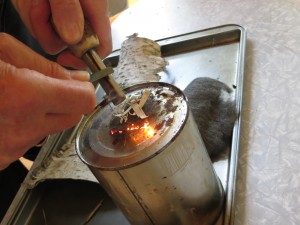
This morning, I went on Kare11 Sunrise News to demonstrate some of the survival science we’ve been exploring. Click here to watch!
Katniss Camp: Survival Science
- by KitchenPantryScientist
This week, the kids and I are embarking on a survival science camp. We won’t face starvation or dehydration, but we’ll learn some wilderness survival skills and the scientific concepts behind them. You could put some of these ideas together and take a group of kids to a local park or nature center for a fun, educational field trip or birthday party!
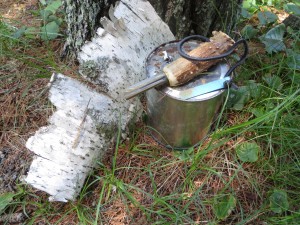
We’re planning to learn about the best way to collect and purify water, how to figure out which way is North, how to build a shelter and stay warm, the art of making a whistle from an acorn and what really works for building a fire (with adult supervision, of course.) Along the way, we can talk about practical things- like what to do if you get lost.
We visited our library and checked out “STAY ALIVE- Survival Skills You Need” by John D. McCann for inspiration and information.
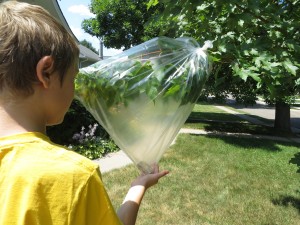
Today, we kicked things off by making a TRANSPIRATION bag, which is a solar still assembled using a clear oven bag, a twisty-tie, and a non-poisonous tree (like a maple.) I’ll write more about transpiration tomorrow, when we measure how much water we’ve collected! We read that in a sunny spot, you can collect between 1 and 2 cups a day.
